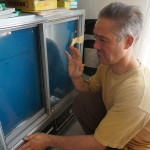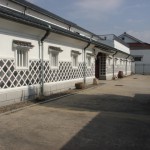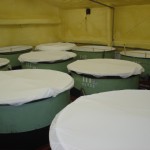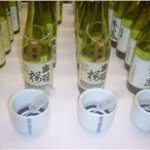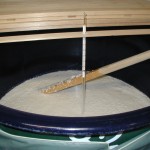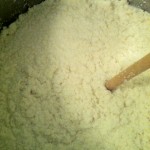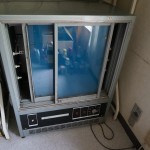 Back in 1991 I traded an answering machine that had a miniature cassette tape in it (remember those?) for a refrigerator. It was made by Sanyo, later absorbed by Panasonic. It was made for medicine. My friend found it left on the street in Tokyo, and it had been left there in such a way that someone who could use it would take it; the manual and key to the door were neatly left with the unit.
Back in 1991 I traded an answering machine that had a miniature cassette tape in it (remember those?) for a refrigerator. It was made by Sanyo, later absorbed by Panasonic. It was made for medicine. My friend found it left on the street in Tokyo, and it had been left there in such a way that someone who could use it would take it; the manual and key to the door were neatly left with the unit.
He no longer needed it, and I did. Conversely, I did not need the answering machine, but he did. We were both happy with the swap.
The unit was already at least a decade old, making it mid-Showa era. The Showa era seems so long ago; just the sound of the word feels nostalgic. Showa.
But I digress. I needed it for my stock of sake, which was currently taking up too much space in my normal refrigerator, which was empty of food due to the lack of space. At least I had my priorities straight!
It was perfect. It could fit dozens of bottles, if I crammed them in there right – and oh did I do that. Both big one (1.8 liters) and small ones (720ml) could get crammed in just fine.
And it was such a trooper. It stayed with me for 23 years, across five residences. It never stopped working! Sure, it got old and worn a bit – the double-paned glass doors did not fit or slide right and called for the omnipotent duct tape to keep sealed. But it kept my sake cold and in good condition. On top of the 20-plus sake in there earmarked for the short-term, I also had half a dozen or so sake aging away in there – the only part of my life in which I can exercise anything remotely resembling patience.
But finally, I had to let it go. It was so old that it used a ridiculous amount of electricity – something akin to $60 to $80 a month all by itself! And the aforementioned unrepairable gaps made that worse. So we decided to get rid of it and replace it, in time, with a new, modern sleek unit made for sake.
On yet another tangent, sake has been called “Hyaku yaku no chou,” or “The best of 100 medicines,” so in fact, this new machine too is made for medicine. But I digress. Again.
The new unit, as of yet not purchased although it has been identified, will fit many more bottles in a more functional space, and uses but $50 a YEAR in electricity. That is like 1/15th what my old friend used.
Also, it was a challenge to throw it away. It was so old that no one wanted to touch it, as things like that must be disposed of properly. And also, being originally for industrial medicine use, there was no rule in place for taking it from a normal consumer. Huh?
Finally, we worked through that red tape, and paid a 10,000 yen ($100) fee for the privilege of having my old friend hauled away. So, the change had to come. But I was surprised how attached I was to the old fellah. I will miss it, for sure. In fact, I already do.
~~~~~~~~~~~~~~~~~~~~~~~~~~~~~~~~~~~~~~~~~~~~~~~~~~~~~~~~~~~~~
Be sure to look for my new book, Sake Confidential, available now at Barnes and Noble, Amazon, and the other usual suspects. Please check out the customer reviews on Amazon:
In over two-dozen short essays presented in a very informal and conversational tone, “the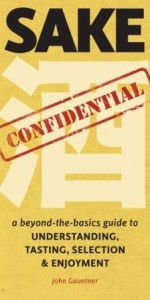 truth about sake” is revealed. The truth about junmai types versus non-junmai types, the truth about the impossibly detailed craft of sake brewing, the truth about temperature, premium types, aging, purity, pasteurization and regionality are all touched upon.
truth about sake” is revealed. The truth about junmai types versus non-junmai types, the truth about the impossibly detailed craft of sake brewing, the truth about temperature, premium types, aging, purity, pasteurization and regionality are all touched upon.
How the industry works, its challenges and strengths, what really creates sake flavors and aromas, specs you can safely ignore, and what hype you can safely avoid are all fair game. You’ll learn what goes into sake pricing, and how brewers get their rice. How to choose sake, and how to improve your tasting ability are also part of the fun. Suffice it to say that nowhere else is so much detailed information about the realities of the sake world assembled together into one place.
– See more at: http://sake-world.com/#sthash.5LOAMrBD.dpuf





